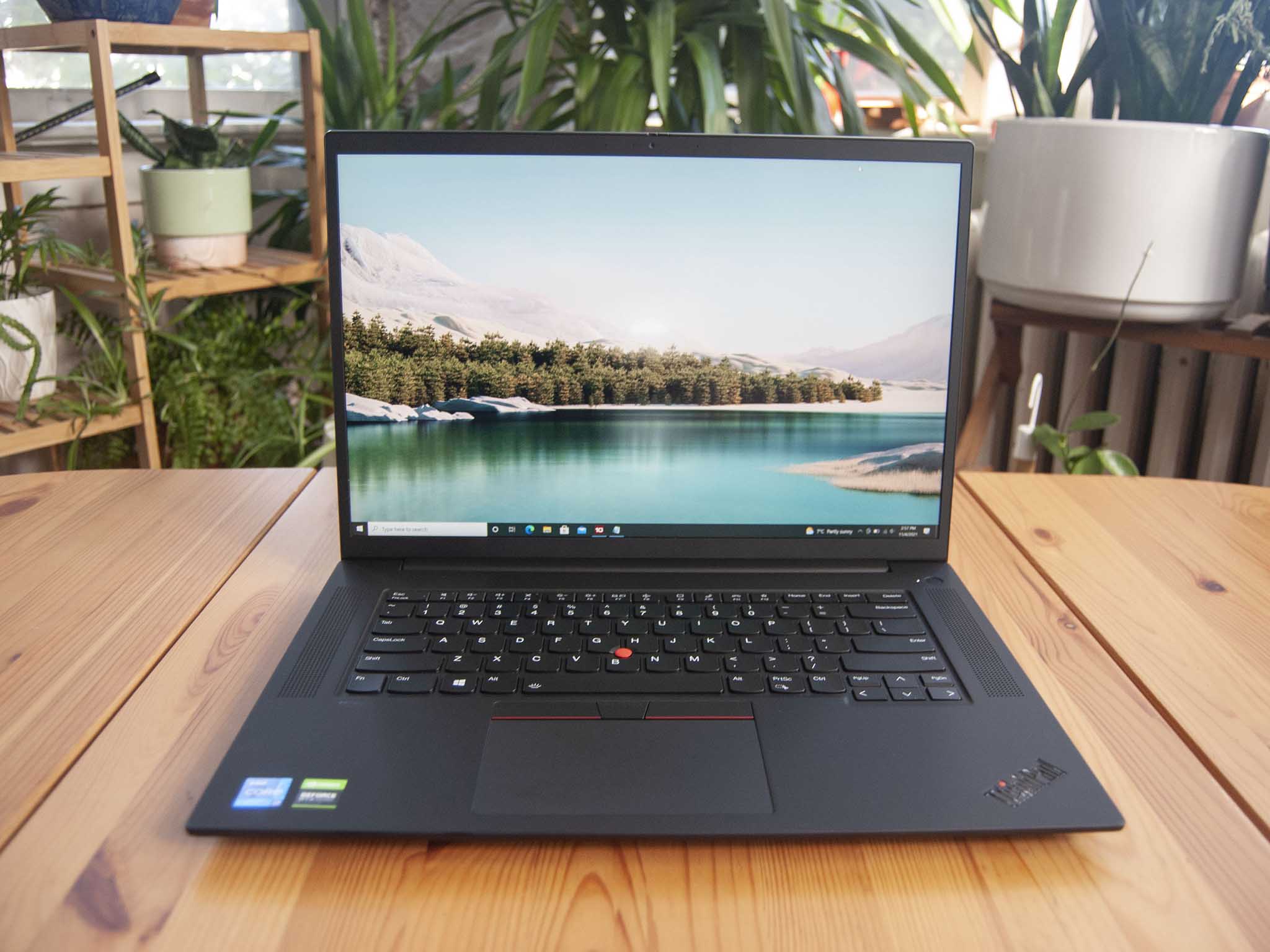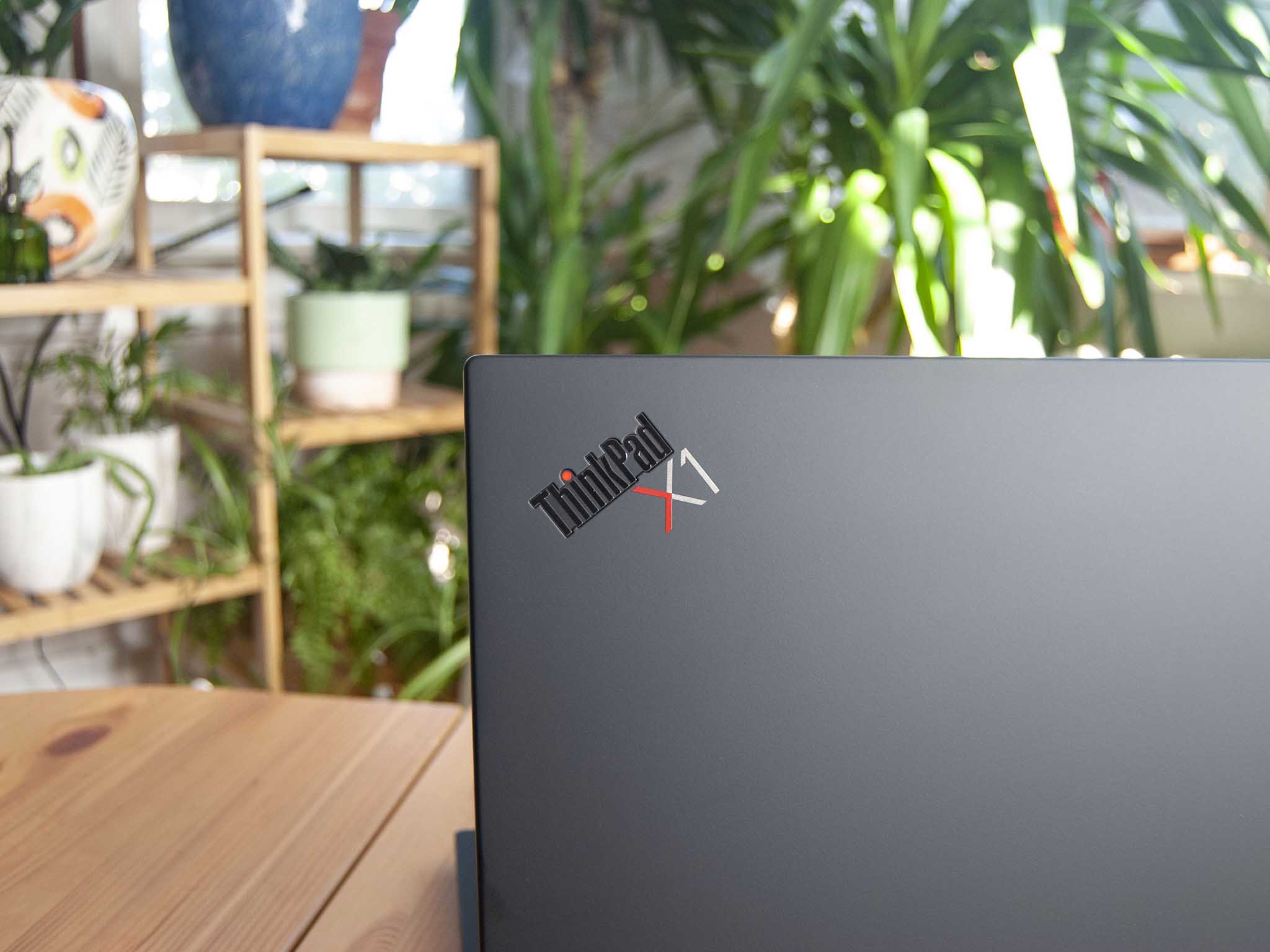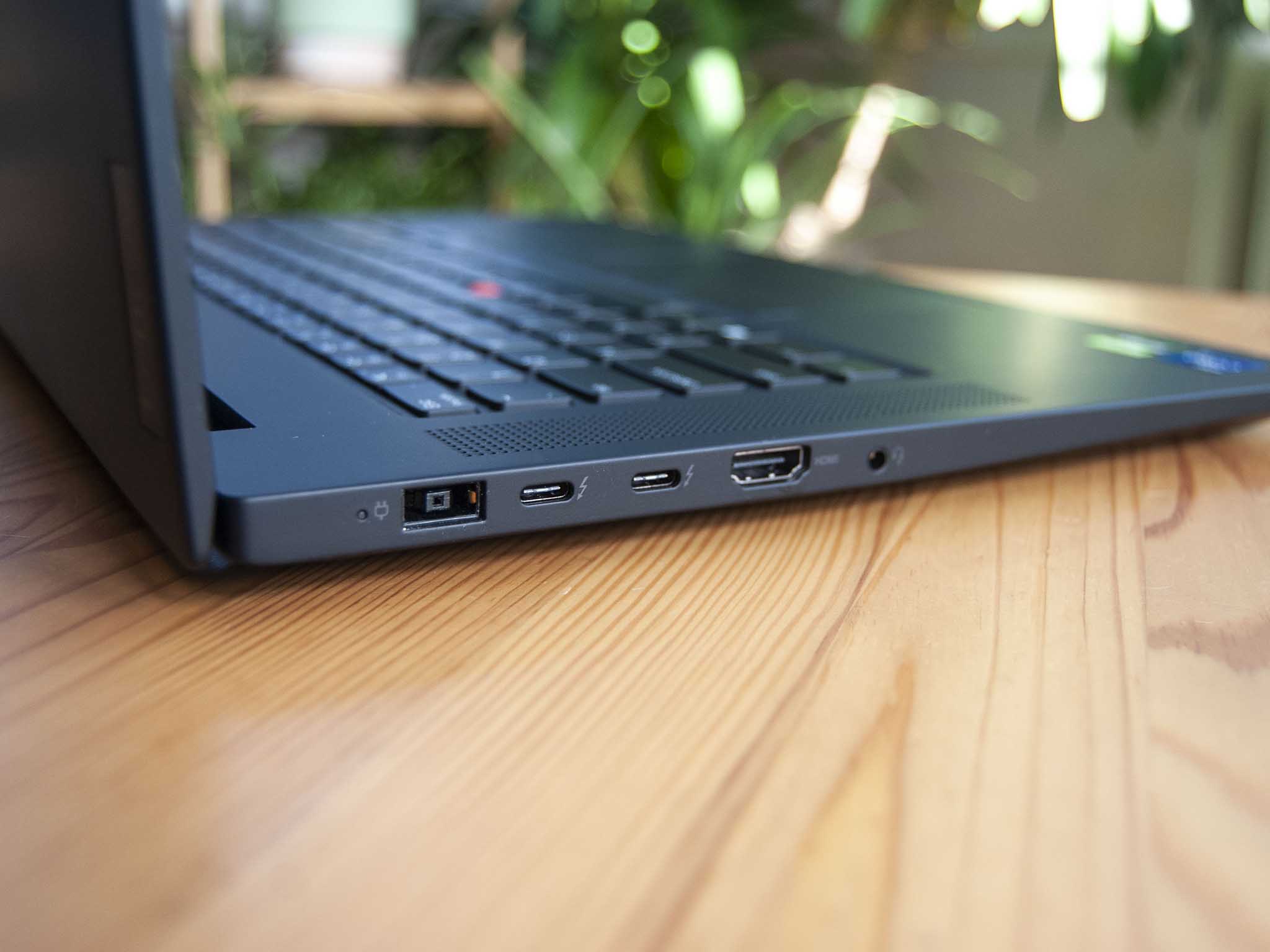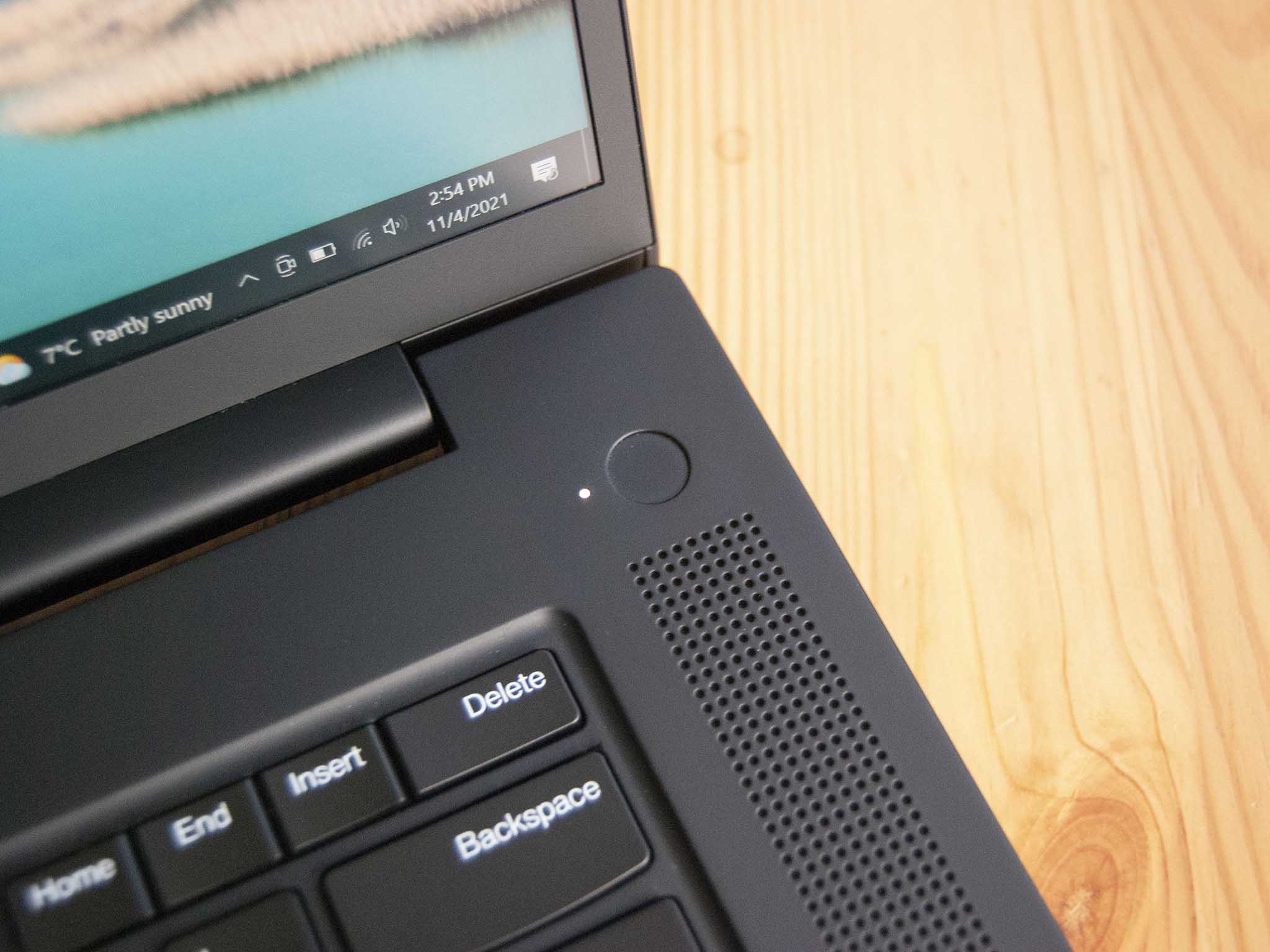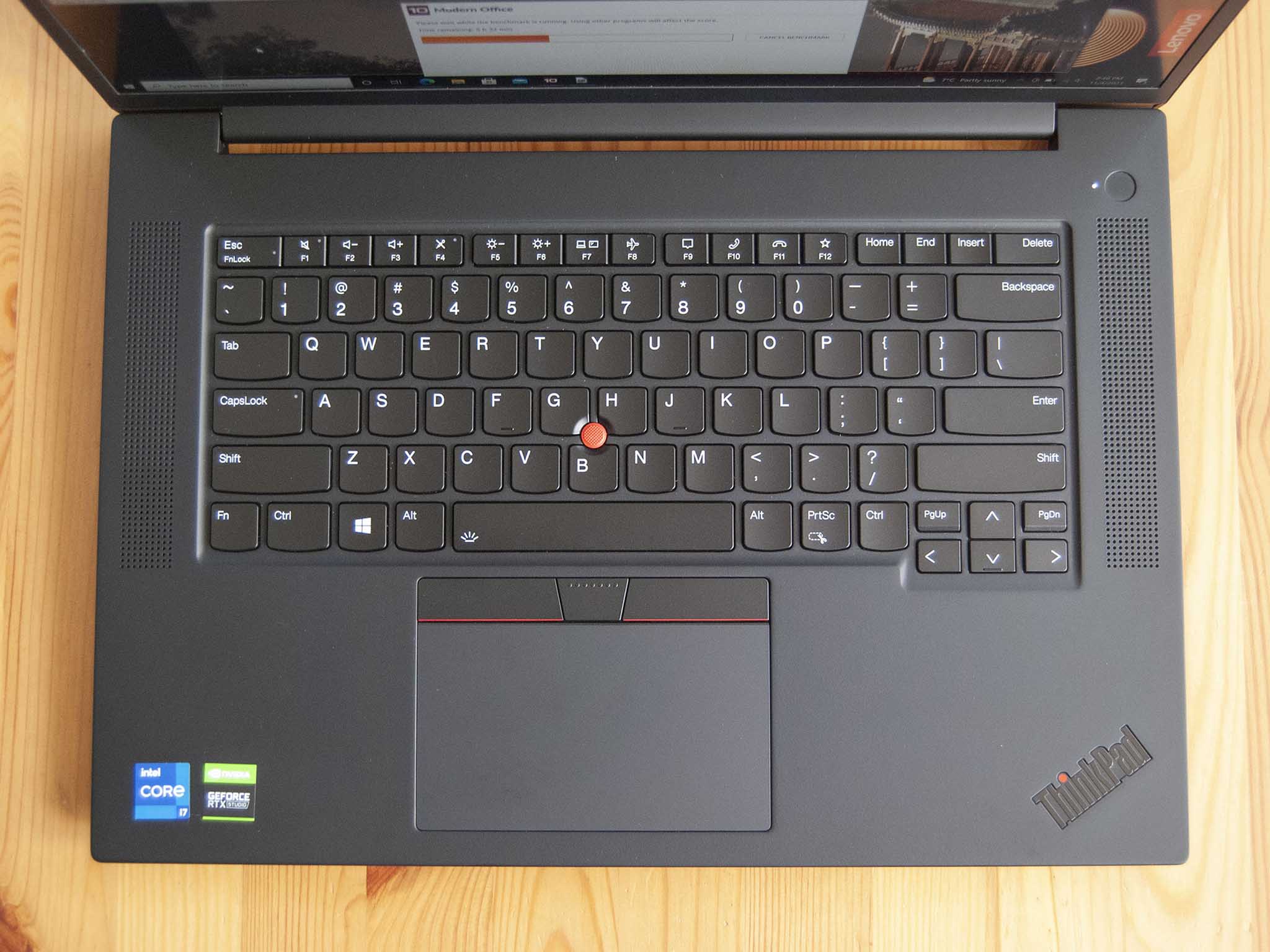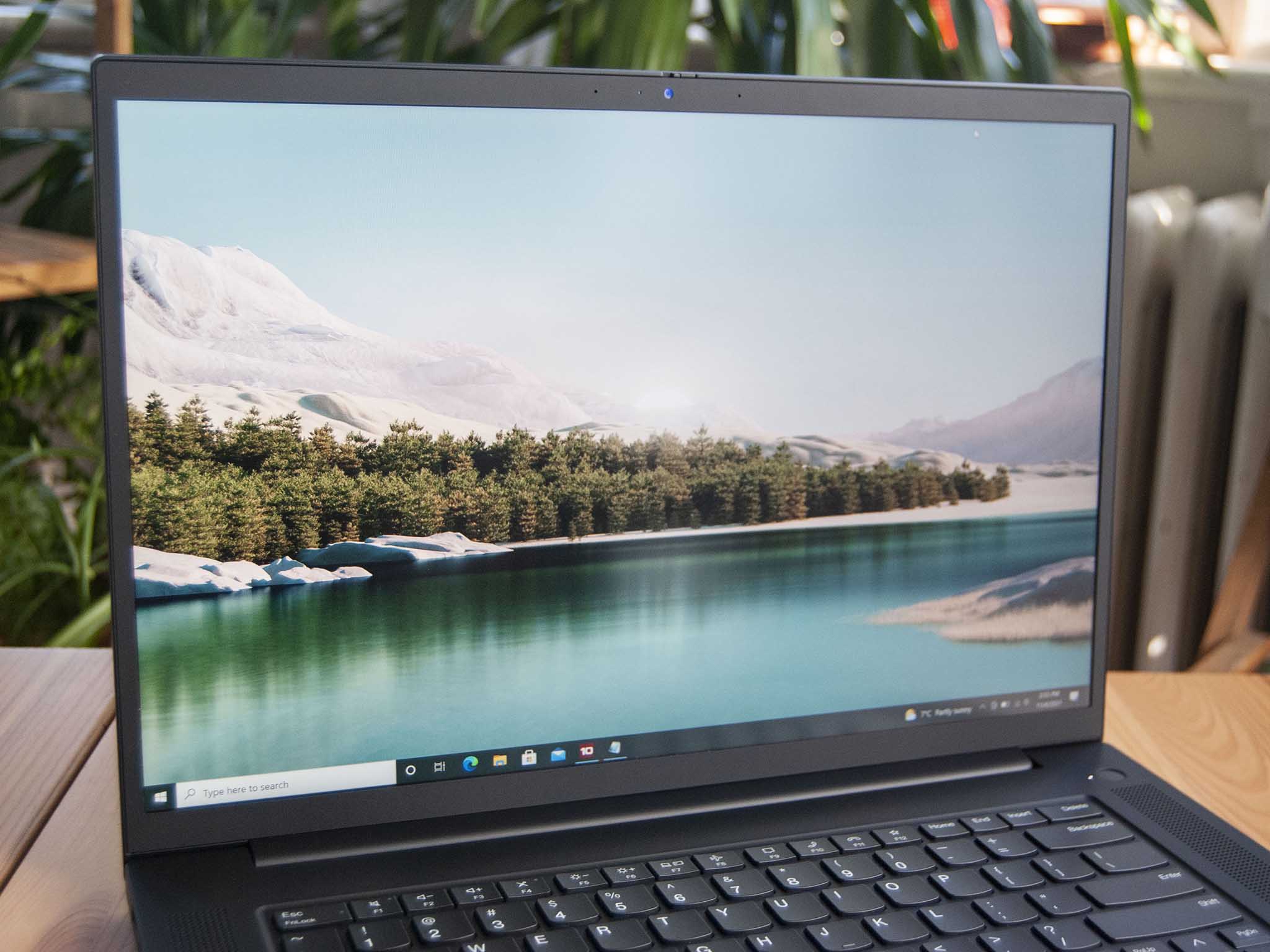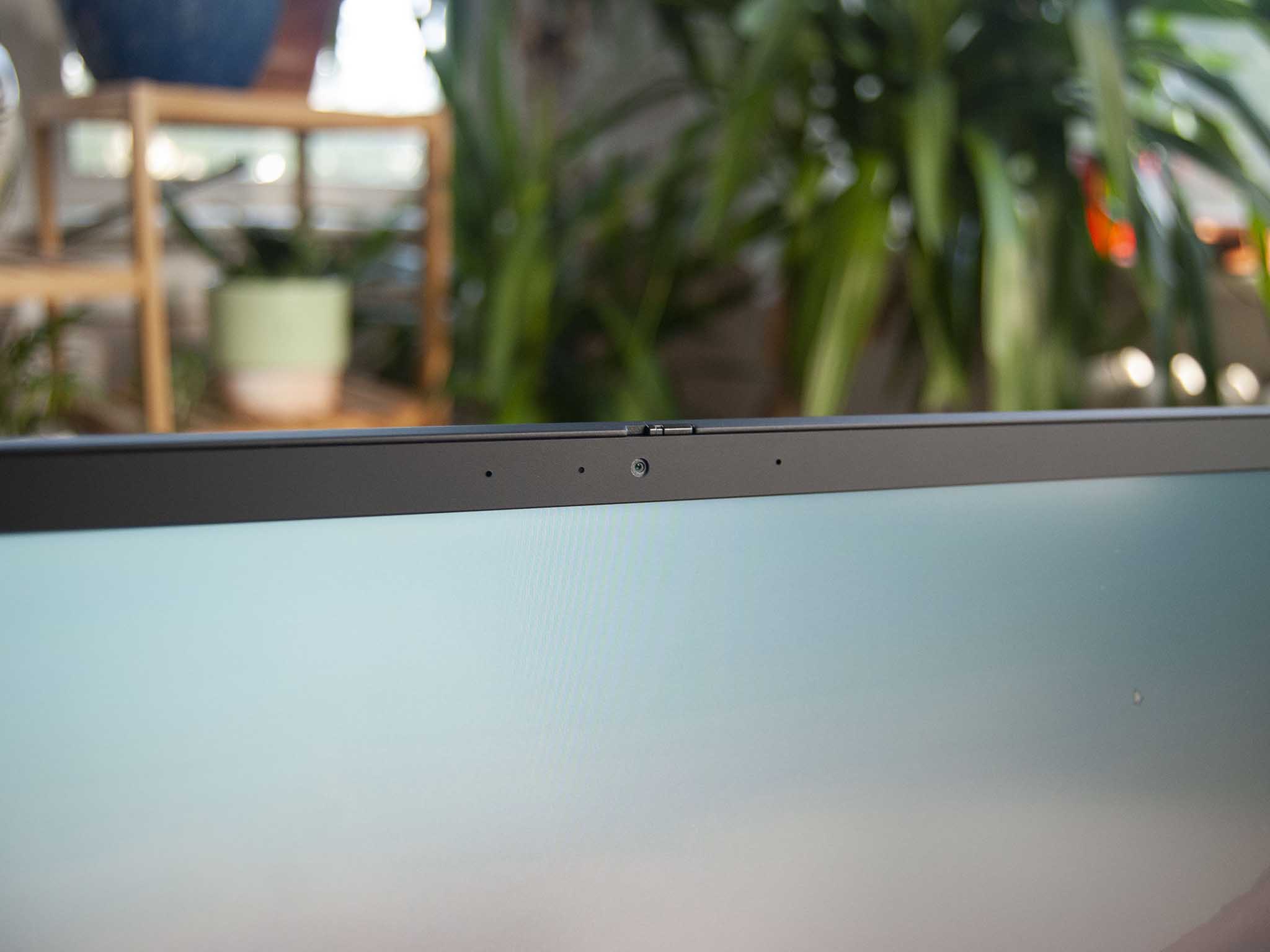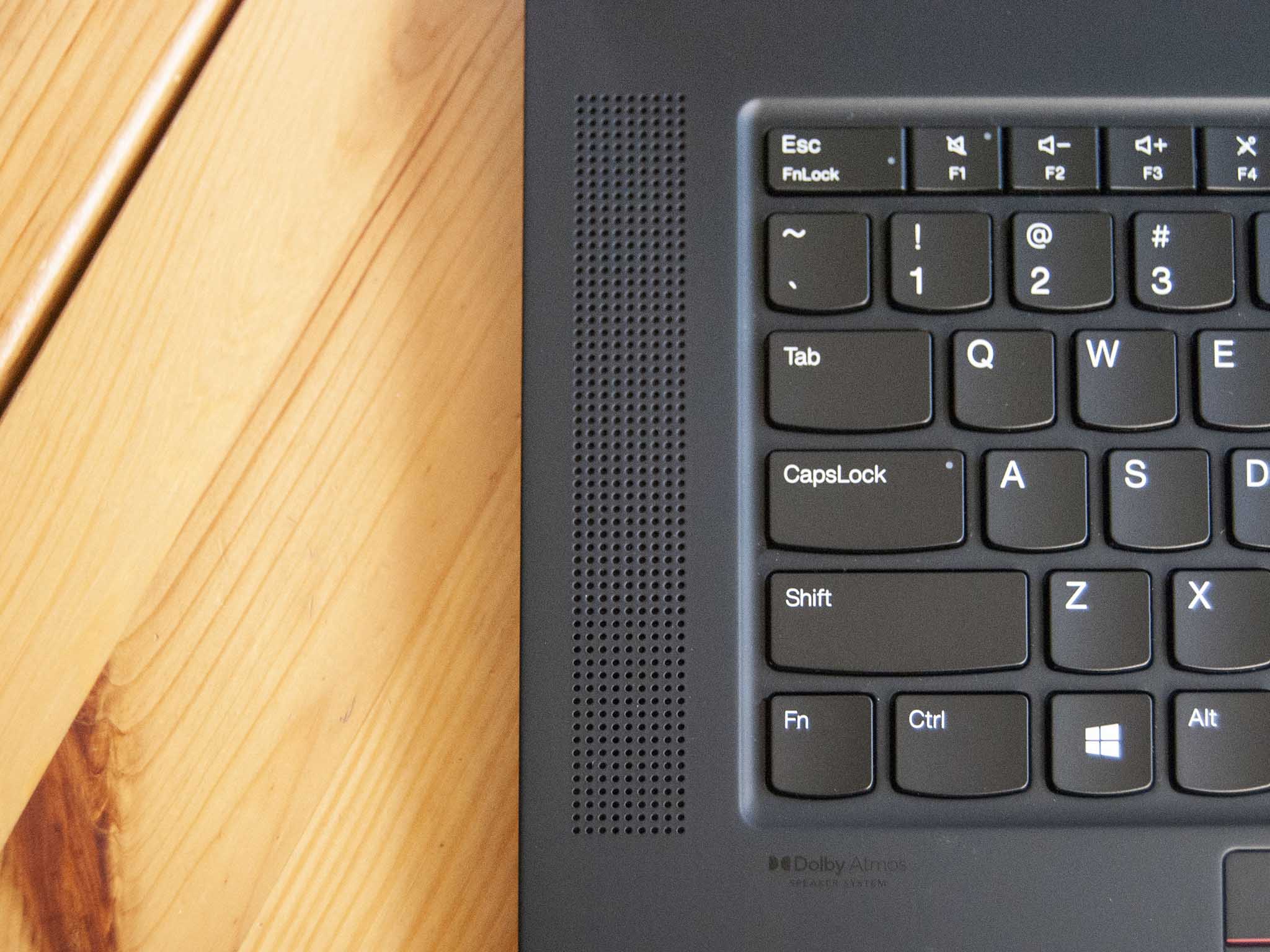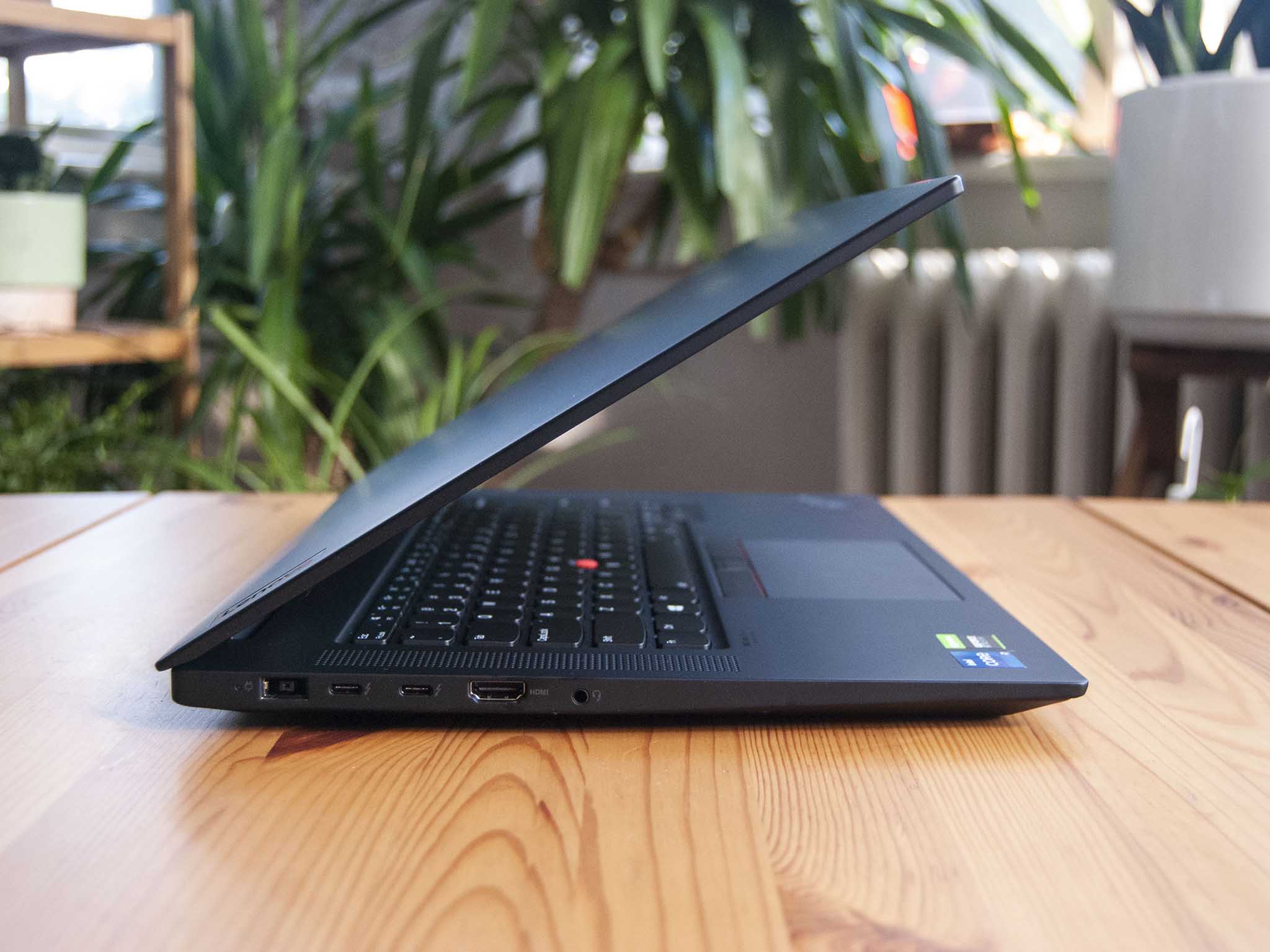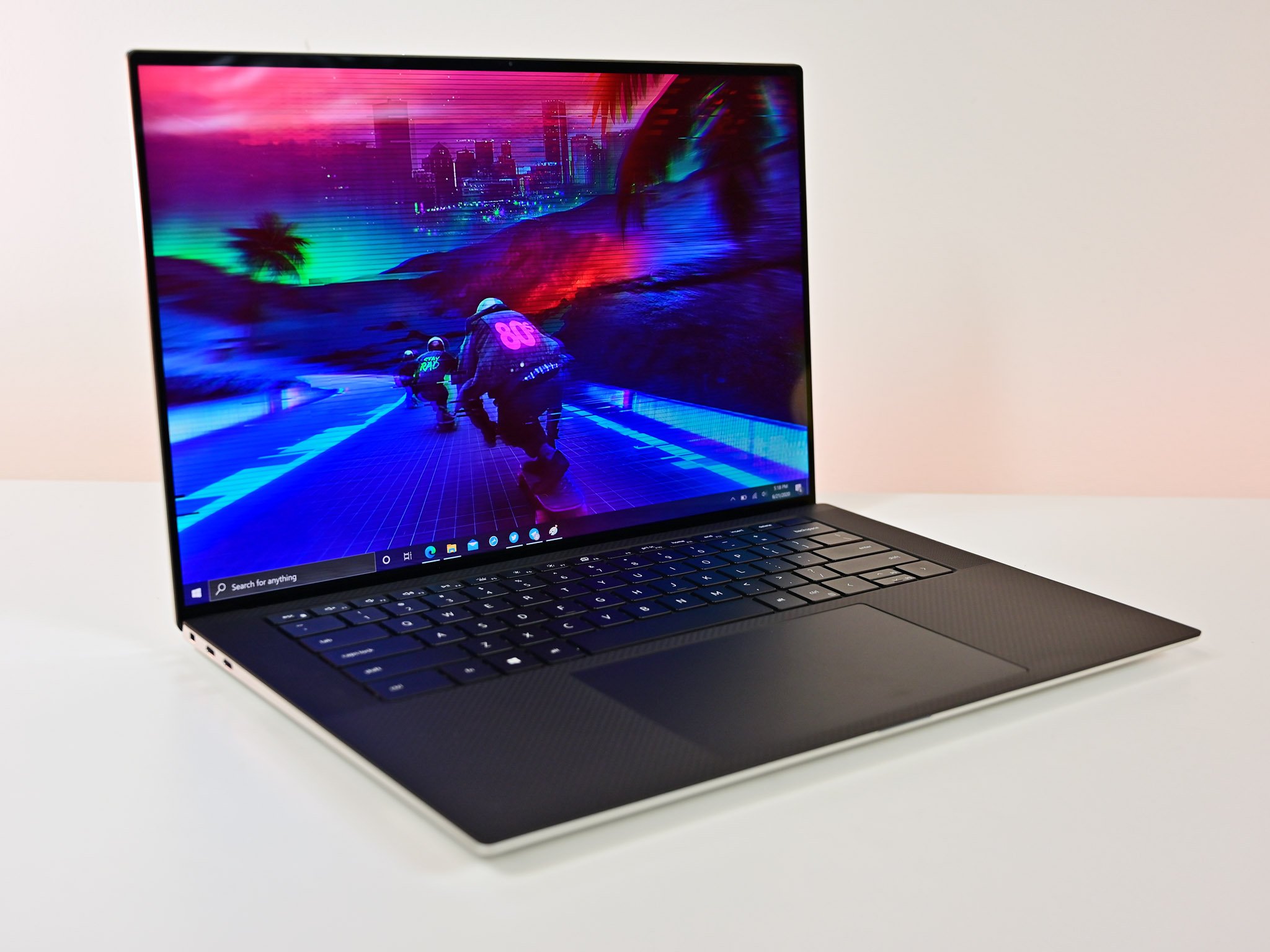Lenovo's ThinkPad X1 Extreme is a business-focused competitor to Dell's XPS 15, bringing a ton of power in a durable, secure chassis. While the ThinkPad X1 Extreme (Gen 3) was mostly a performance refresh over the second generation, the fourth-gen model that I have in for testing goes much deeper with upgrades and refinements. On top of new performance hardware, it has new display options, faster storage, optional 5G connectivity, new speaker layout, and more. I've been using the ThinkPad X1 Extreme (Gen 4) for a couple weeks to see exactly where it excels and whether or not it's worth the fairly chunky price tag.
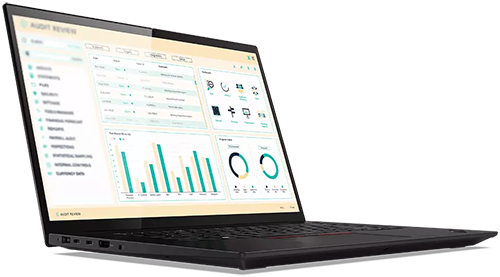
Bottom line: The X1 Extreme (Gen 4) improves with refreshed performance hardware, new 16:10 displays, Thunderbolt 4, PCIe 4.0 storage, 1080p camera, and top-firing audio. However, battery life takes a dip, and you might notice some backlight bleed while viewing dark scenes. Nevertheless, those with a big budget and a heavy workload will want to keep the X1 Extreme (Gen 4) in mind.
Pros
- New 16-inch display with 16:10 aspect ratio
- Thunderbolt 4, 5G LTE
- Top-firing speakers with Dolby Atmos
- Best keyboard available
- 1080p camera, IR sensor
Cons
- Battery life isn't great
- Very expensive with frequent price fluctuations
- Chassis is a fingerprint magnet
- Some display light bleed
Lenovo ThinkPad X1 Extreme (Gen 4): Price, availability, and specs
Lenovo supplied Windows Central with a review unit of the ThinkPad X1 Extreme (Gen 4). This specific model has inside an 11th Gen Intel Core i7-11800H processor (CPU), NVIDIA RTX 3060 Laptop graphics card (GPU), 16GB of single-channel RAM, 512GB M.2 PCIe 4.0 solid-state drive (SSD), and a 16-inch display with 16:10 aspect ratio and QHD+ resolution. This exact model costs about $3,786 at Lenovo. Prices fluctuate quite a bit with frequent Lenovo sales; you can also find models at Amazon and Newegg.
Intel vPro CPUs are available for extra management and security. The Core i9-11950H vPro chip unlocks the NVIDIA RTX 3080 Laptop GPU. Otherwise with the Core i5 or Core i7 you're locked into either the RTX 3050 Ti or RTX 3060 Laptop GPUs.
Here are the exact specs as found in my review unit.
| Category | Spec |
|---|---|
| OS | Windows 10 Pro |
| Processor | 11th Gen Intel Core i7-11800H 8 cores, 16 threads Up to 4.6GHz |
| RAM | 16GB DDR4-3200MHz Single-channel Two SODIMM slots available Upgradeable |
| Graphics | NVIDIA RTX 3060 Laptop 6GB GDDR6 VRAM |
| Storage | 512GB M.2 PCIe 4.0 NVMe SSD Opal2 security Upgradeable One M.2 slot |
| Display | 16 inches 2560x1600 (QHD+) 16:10 aspect ratio Non-touch IPS, anti-glare Low blue light |
| Ports | Two Thunderbolt 4 Two USB-A 3.2 (Gen 1) SD card reader 3.5mm audio jack HDMI 2.1 |
| Audio | Dual 2W stereo speakers Dolby Atmos Dual-array microphones |
| Connectivity | Intel Wi-Fi 6E AX210 Bluetooth 5.2 |
| Camera | Front-facing 1080p IR camera Privacy shutter |
| Keyboard | Spill-resistant Backlit |
| Touchpad | Precision TrackPoint |
| Security | Fingerprint reader IR camera dTPM 2.0 Kensington Nano lock slot Camera shutter |
| Battery | 90Wh 230W AC adapter |
| Dimensions | 14.15 x 9.99 x 0.7 inches (360mm x 254mm x 18mm) |
| Weight | 3.99 pounds (1.81kg) |
| Color | Black |
| Material | Aluminum alloy (bottom) Carbon fiber hybrid (top) |
Lightweight and thin
Lenovo ThinkPad X1 Extreme (Gen 4): Design and features
The ThinkPad X1 Extreme's chassis has been changed up just a bit for the fourth generation, with a deeper body to make up for the taller display. It's still around 0.7 inches thin and it still weighs in at around 4 pounds. The aluminum alloy base and carbon fiber hybrid lid contribute to the relatively light weight, and considering the performance hardware inside there's not much to complain about. The laptop is rigid, it's built well, and it has undergone the usual MIL-STD-810H mil-spec durability test to prove it can put up with harsh conditions.
You only have one option with the standard flat Black finish, and it's still an absolute fingerprint magnet. Be sure to bring a cleaning cloth with you when working in public. The lid has a ThinkPad logo on it, but otherwise it's a clean design. The port layout is the same as the third-gen X1 Extreme, though there are some performance upgrades. Two Thunderbolt 4 take over for TB3, and the HDMI 2.0 port becomes HDMI 2.1. There's no Nano-SIM slot on my review model, but opting for optional 5G LTE connectivity should add it next to the SD card reader.
All the latest news, reviews, and guides for Windows and Xbox diehards.
Opening the lid of the X1 Extreme (Gen 4) reveals some of the more significant changes. Most noticeable is the larger display, which I'll cover in the next section. The added chassis depth means there's more room to work with around the keyboard and touchpad. Lenovo has moved the speakers to now flank the keyboard on either side, reducing the chances of sound being muffled from down-firing speakers. Dolby Atmos makes a return, helping boost sound from the 2W speakers. Audio is excellent. There's plenty of volume to work with, bass is deep, and everything — from music to movies to your coworkers on a call — can be heard clearly.
The fingerprint reader no longer stands alone, indented into the palm rest. Instead it's now doubled up on the power button. This improves the overall clean look of the laptop. The keyboard is as good as ever, offering up deep 1.5mm travel, cupped keys, and a three-stage backlight. There's no number pad included (the space is used for the speakers), but there are standalone navigation keys and dedicated call control buttons for easier conferencing. The TrackPoint system is included above the large Precision touchpad for anyone who still can't give up the red pointer and physical buttons. The touchpad is solid, it tracks well, and clicks feel full.
Cameras on even some of the most expensive laptops seem to still be living a few years in the past, often with grainy HD resolutions. Thankfully, Lenovo has upgraded to 1080p (FHD) for a much cleaner picture. This is standard on all X1 Extreme models, but you can upgrade to a hybrid IR camera and a webcam shutter if you need the added security through Windows Hello.
The Wi-Fi 6E modem, which comes soldered to the board, is included in all models, coupled with Bluetooth 5.2 for wireless accessories. LTE connectivity makes an optional appearance again, though it's been upgraded from 4G to 5G in the fourth generation. Add the Snapdragon X55 modem if you need to stay connected outside of Wi-Fi range.
Big changes
Lenovo ThinkPad X1 Extreme (Gen 4): Display
The new 16-inch display with 16:10 aspect ratio is one of the X1 Extreme's most significant upgrades.
With a move to a 16:10 aspect ratio for many of its most popular laptops — including the ThinkPad X1 Yoga (Gen 6) — Lenovo has been leaning into a trend that we've been asking to see implemented for years. The taller display removes most of the bezel below the screen for a cleaner look. It also allows you to fit more onto the screen at once. With the taller aspect ratio comes a new 16-inch size that seems perfect for this type of laptop.
There's no longer a 4K OLED version available, though this could come sometime in the future. As it stands, there are three total displays to choose from. The "basic" version, which is the one I have in my review unit, is set at a fairly crisp 2560x1600 (QHD+) resolution. The IPS panel has an anti-glare coating, and it emits low blue light to be easier on the eyes.
Testing color accuracy with a SpyderX Pro colorimeter, it managed 100% sRGB, 82% AdobeRGB, and 87% DCI-P3. These are decent results for just about anything other than specialized tasks that require better AdobeRGB or DCI-P3 reproduction, which are available in the higher-res displays. As for brightness, it topped out at 429 nits and got down to 4 nits at its lowest point. I did notice some light bleed along the bottom edge of the display, something that will irk you if you're often displaying dark scenes.
For those who need more pixels there are also a couple of UHD+ models with your choice of touch or non-touch capabilities. They both use an IPS panel, they manage 100% AdobeRGB (as advertised), they have Dolby Vision and HDR400, and they emit low blue light.
The non-touch version has an anti-glare finish, while the touch version is anti-reflective and anti-smudge. Both manage up to 600 nits brightness as advertised by Lenovo. Inking is possible on the touch model, and Lenovo's Precision Pen 2 should be the right match. For specialized work, know that both UHD+ models are also X-Rite Pantone color calibrated.
Lots of power, not much battery
Lenovo ThinkPad X1 Extreme (Gen 4): Performance and battery
High-end performance has always been a staple of the X1 Extreme series, as the name suggests. The fourth generation has been bumped up to 11th Gen Intel Core H-series processors as well as NVIDIA's RTX 30 Series Laptop GPUs. Perhaps more important is a move to PCIe 4.0 storage, which unlocks blistering transfer speeds.
ThinkPad X1 Extreme (Gen 4) models start at a Core i7-11800H, which is what I have in my review unit. It can be paired with either an NVIDIA RTX 3050 Ti or RTX 3060 Laptop card; for the RTX 3080 Laptop GPU you'll need to opt for the Core i9 CPU.
Performance in testing is mostly excellent. The i7-11800H put up an excellent Geekbench 5 single-core score, though it lagged behind in multi-core testing. At least PCMark 10 benchmarking, which measures how well your system's components work together, was impressive. As mentioned, PCIe 4.0 storage is insanely fast, and you can always upgrade after purchase. This system has single-channel RAM (one 16GB stick), though there are two SODIMM slots available for future upgrades.
I couldn't get 3DMark's Time Spy test working, though Fire Strike ran fine. The X1 Extreme (Gen 4) put up good numbers here, though I wouldn't buy this laptop to be used as a gaming machine. Check out our collection of the best gaming laptops instead.
See how the X1 Extreme (Gen 4) compares to previous generations, as well as other laptops that we've recently tested.
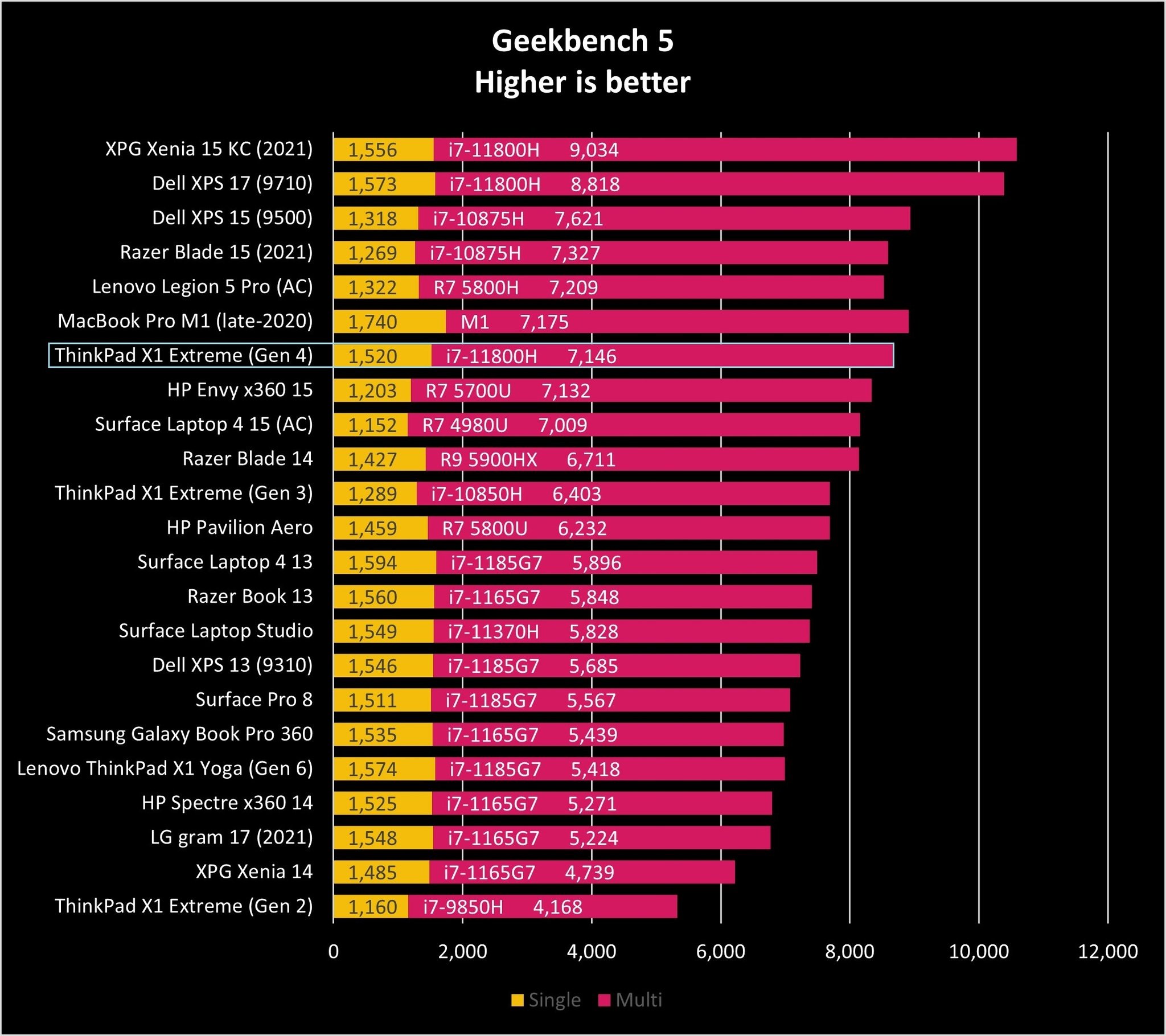
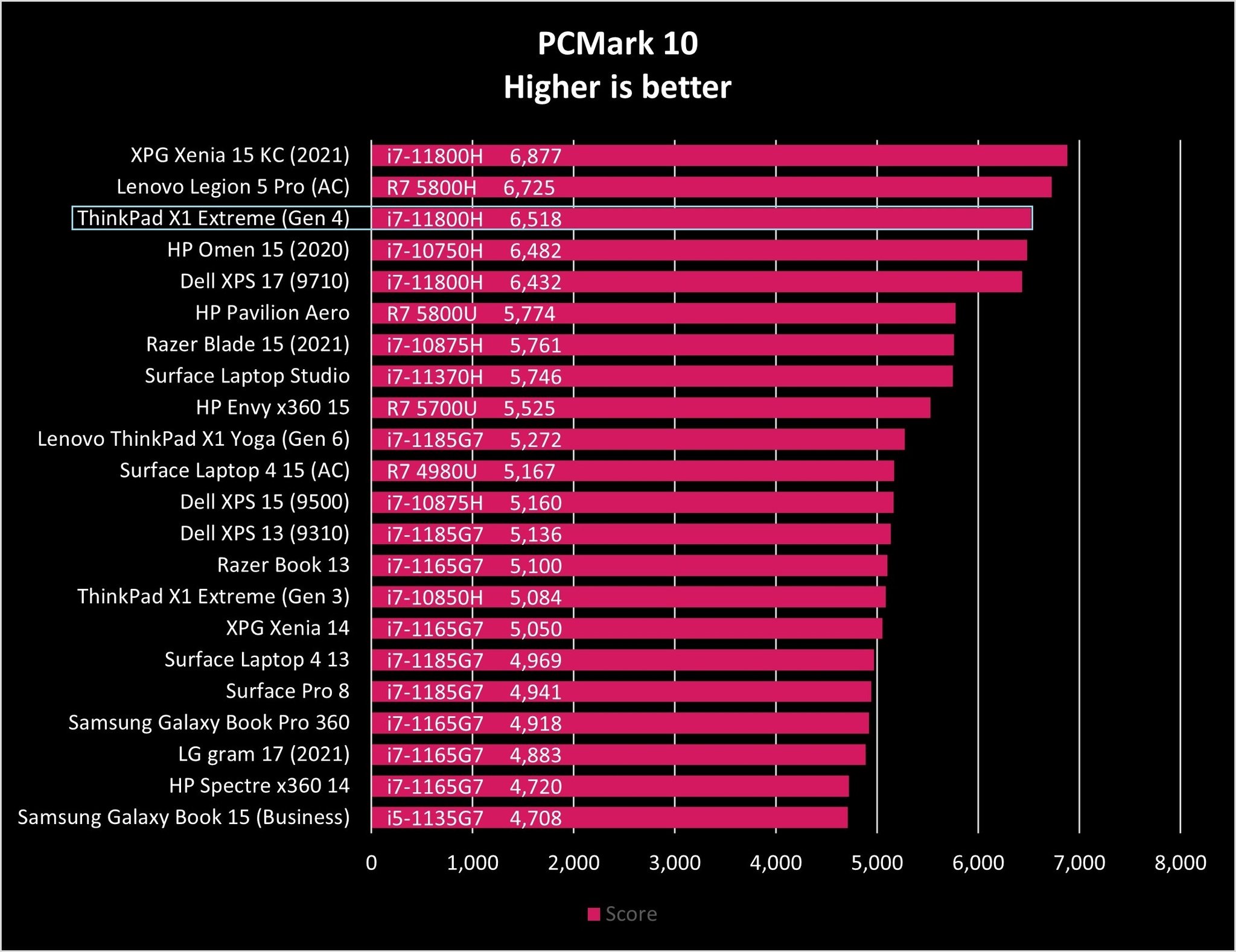
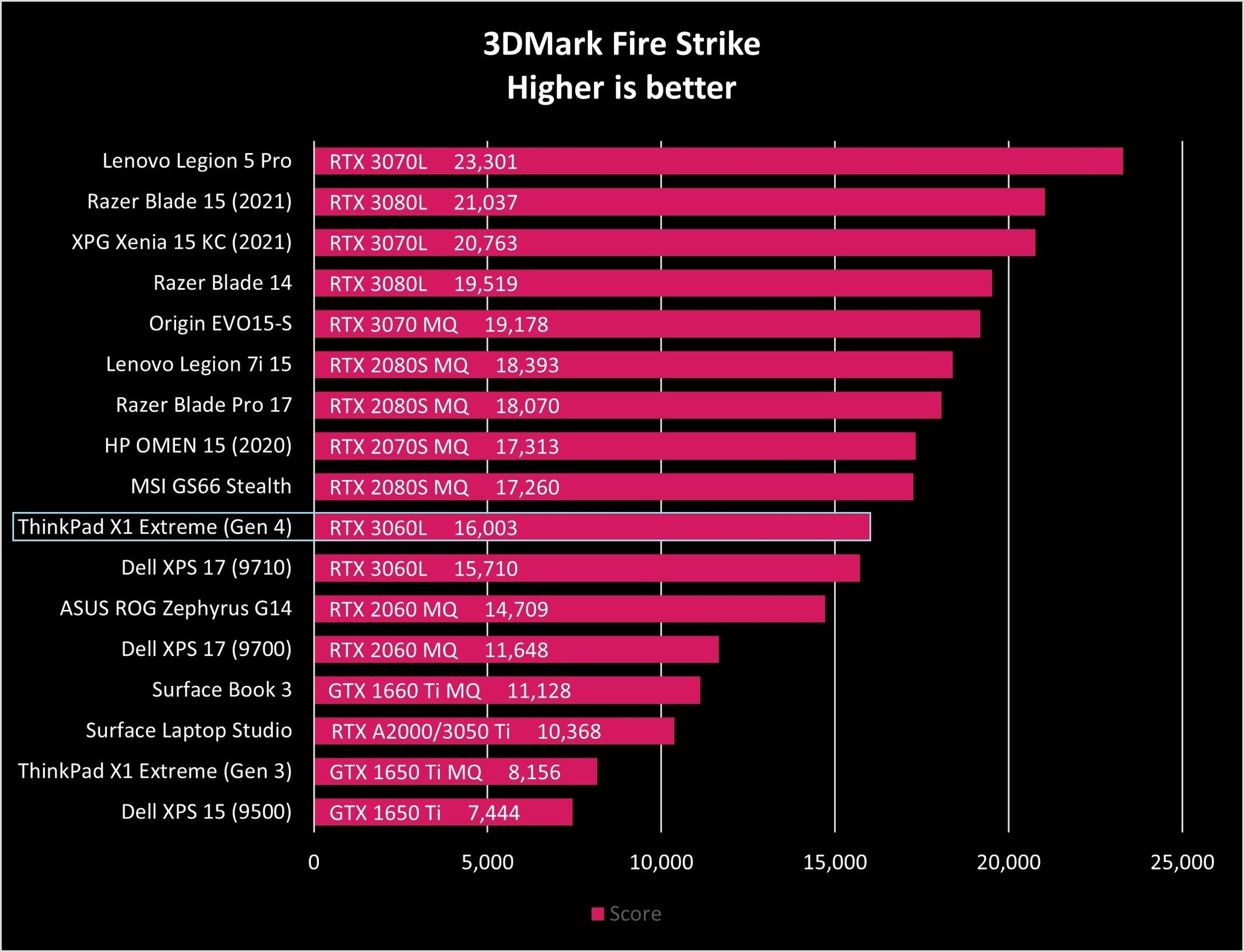
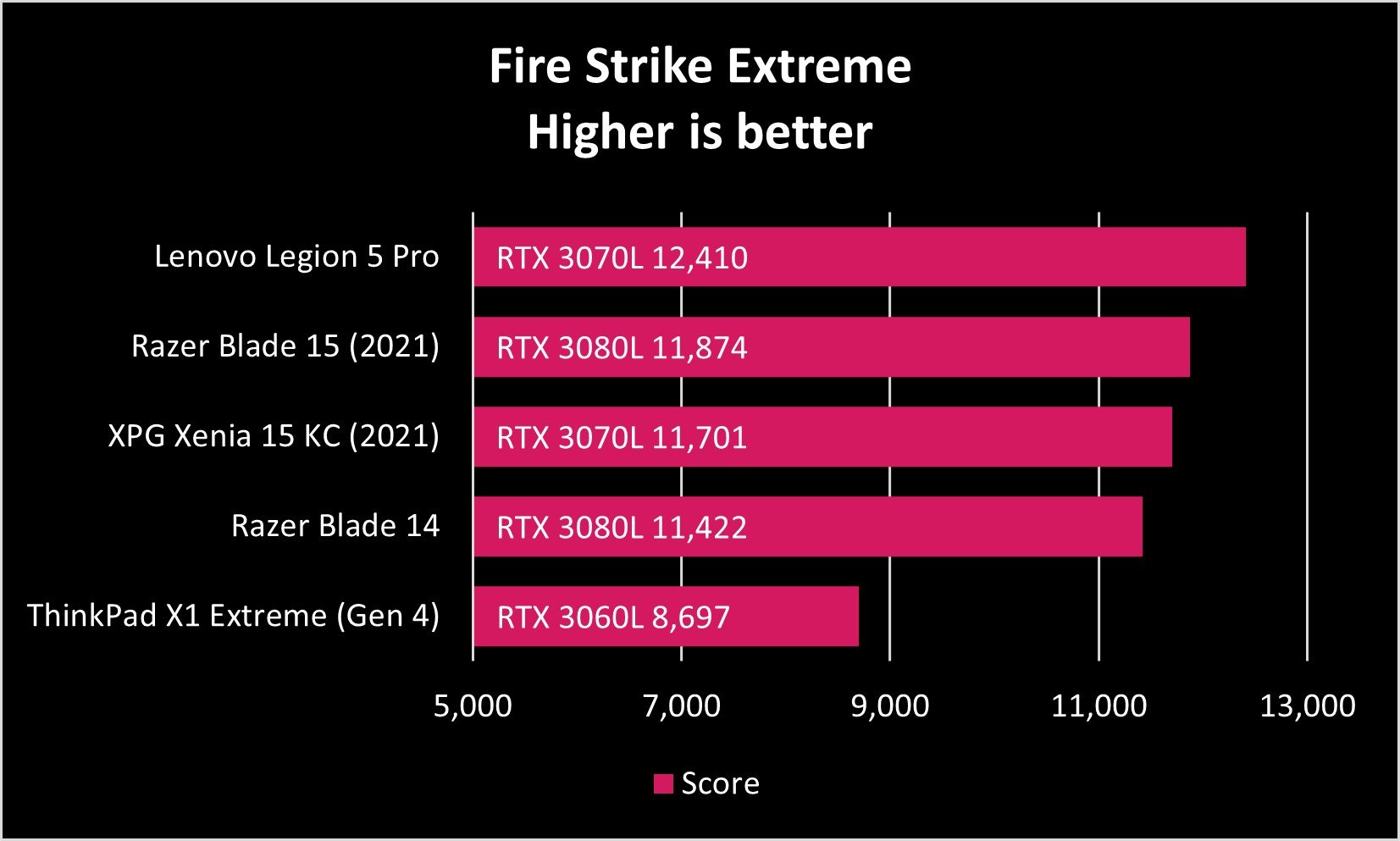
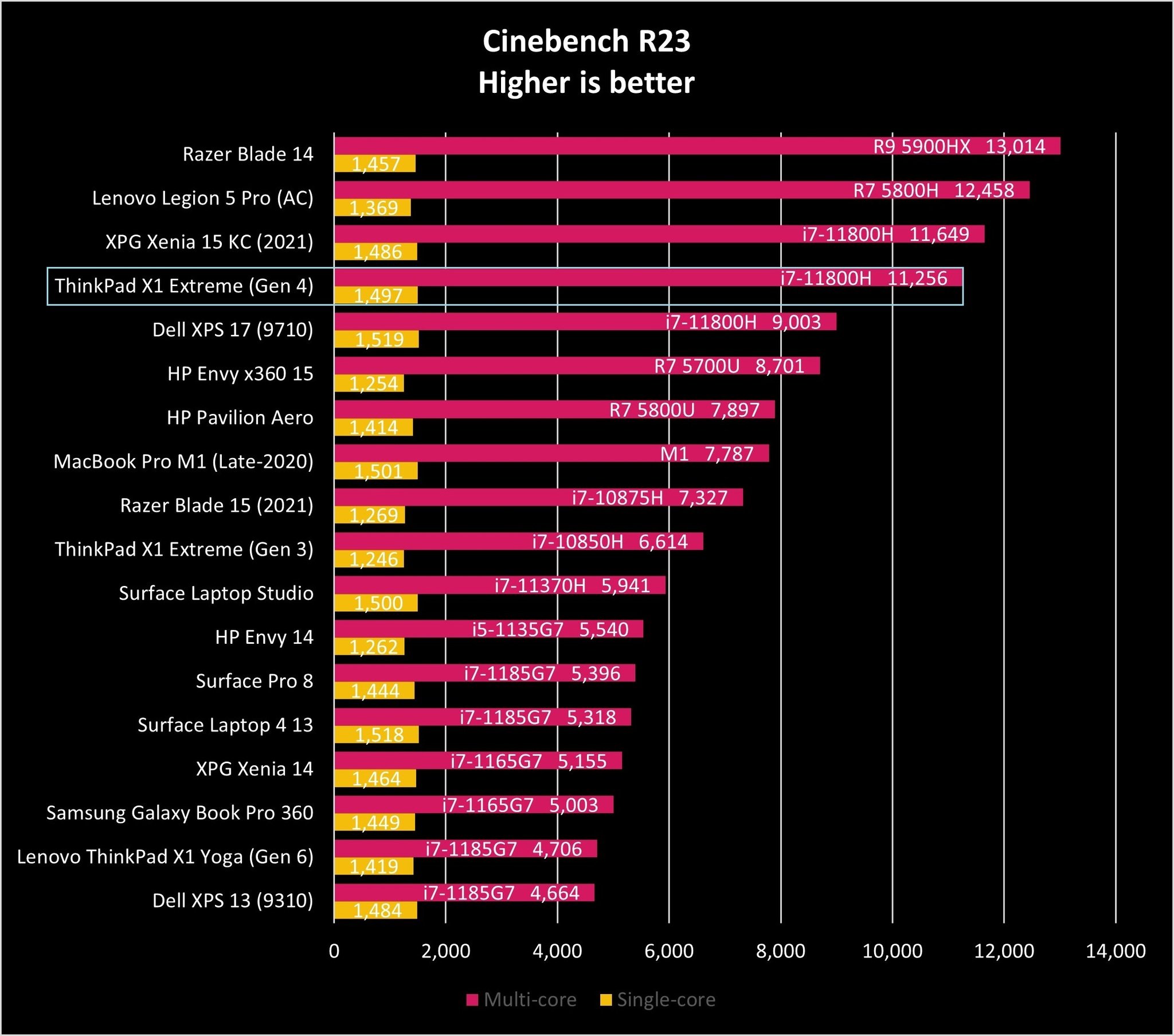
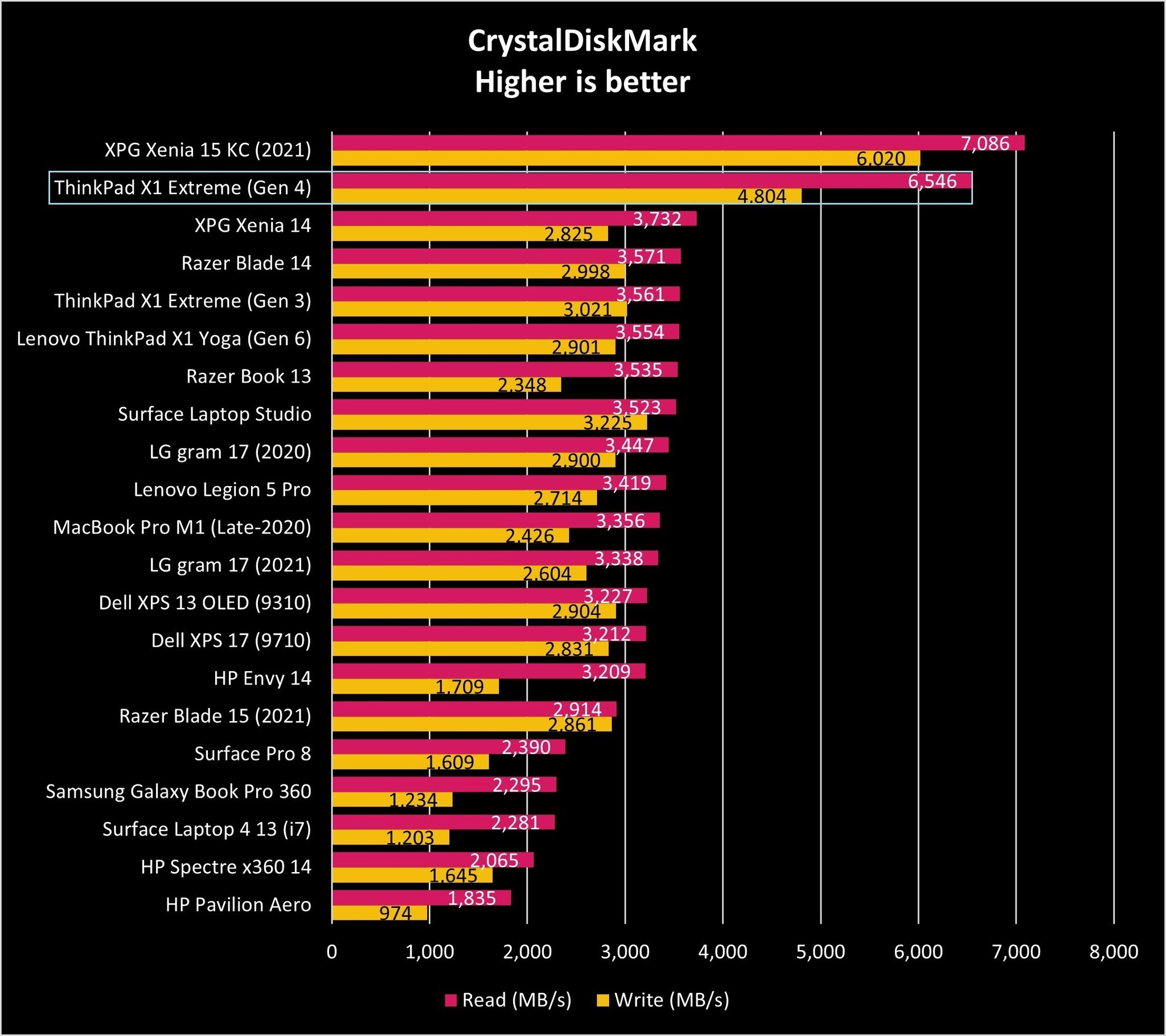
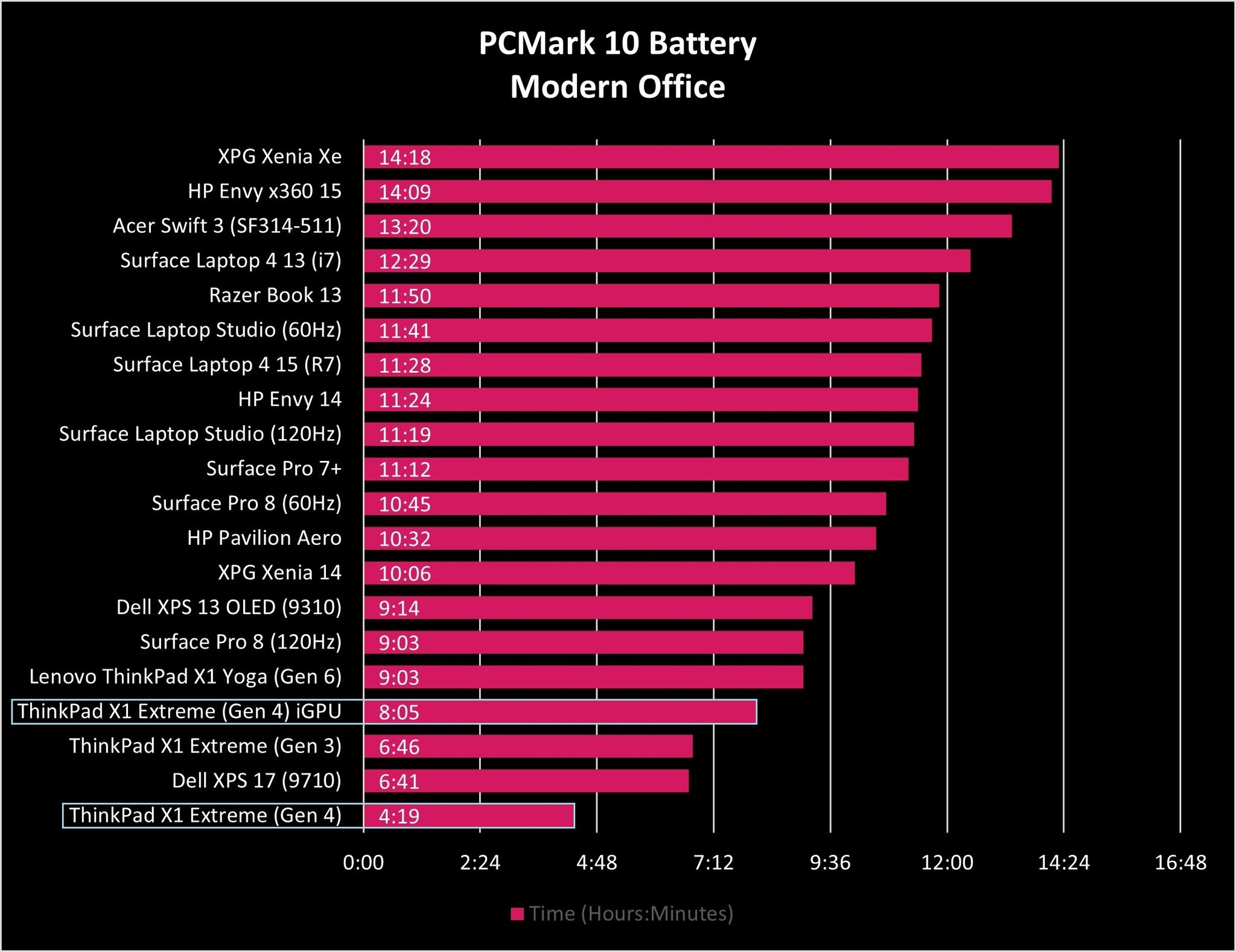
Battery life is a mixed bag. The third-gen X1 Extreme was able to hit more than seven hours of life from a charge in PCMark 10's Modern Office rundown. Using the same test with the same power setting and screen brightness, the X1 Extreme (Gen 4) lasted a measly four hours and 19 minutes. And that's without a UHD OLED display. I suspected something might be up with NVIDIA's Optimus feature, which intelligently swaps between discrete and integrated GPU to save battery life. I retested with the laptop manually set to use only the iGPU; the laptop lasted more than eight hours in the same PCMark rundown test.
This could be an issue caused by Lenovo and NVIDIA system settings clashing, as it seems that some people are seeing far better battery life even with Optimus set to automatic (as it should be). No matter what, a laptop with this level of performance will no doubt have you lugging around the AC adapter if you step out of your home or office. The good news is that you can get about a 90% charge from an hour of AC charging.
Big power
Lenovo ThinkPad X1 Extreme (Gen 4): Competition
The Dell XPS 15 is no doubt the laptop that most people compare to the X1 Extreme. It has gorgeous IGZO display options with 16:10 aspect ratio, performance is stellar, and the build quality is outstanding. If you don't need quite as many extra business features but still want an Intel H-series CPU and discrete GPU, this should be one of the first alternatives you check out. Do note that you can find cheaper XPS 15 9510 models thanks to a Core i5 option, and also note that the discrete GPU tops out at an NVIDIA RTX 3050 Ti Laptop card.
For gamers out there who want a 15-inch laptop focused more on fun than work, the Razer Blade 15 should be considered. It sits within the same premium price range as the X1 Extreme, but its displays, keyboard, and performance tuning are all focused toward a high-end gaming experience.
And if you're interested in a convertible laptop, the ThinkPad X1 Yoga (Gen 6) is the best available from Lenovo. It lacks a discrete GPU and it's not using the same H-series Intel CPUs, but it still delivers a ton of performance on top of extra features like Human Presence Detection.
For more options, be sure to browse our list of the best Lenovo laptops as well as our picks for overall best Windows laptops.
Decision decisions
Should you buy the ThinkPad X1 Extreme (Gen 4)?
Who it's for
- Those who need high-end performance from a relatively thin and lightweight laptop
- Those who have a large budget
- Those who want some of the best typing, pointing, and audio in a laptop
Who it isn't for
- Those who need all-day battery life
- Those who mainly focus on productivity work or media consumption
- Those who can't justify spending thousands of dollars on a laptop
The fourth-gen refresh of the X1 Extreme is the one I was waiting for. The taller 16:10 display is one of the primary changes, and for the most part it's a great upgrade. I just wish there was still an OLED version available. Moving the speakers up to flank the keyboard results in even better audio than ever before, and the new 1080p camera that's standard is only fitting for a laptop this price.
Typing on the X1 Extreme is as good as ever thanks to deep 1.8mm travel and cupped keys, and the sizable touchpad is equally impressive. Clicks feel full without any of the hollow rattle you get on some laptops. Port selection is essentially the same, though you now get Thunderbolt 4 and HDMI 2.1 as updated standards.
The performance upgrade is, as expected, also a win. It's the usual bump up for the CPU and GPU, with an even more impressive upgrade to PCIe 4.0 storage compatibility. Unfortunately, battery life doesn't seem to be any better. This doesn't seem to be an issue with all X1 Extreme (Gen 4) systems, and it could be a rare issue with discrete GPU power tuning. Nevertheless, it's something to keep in mind.
The X1 Extreme (Gen 4) is still a top option for any power users who love the ThinkPad's durability and security features. The overall design is pretty much flawless at this point, though you will want to keep a cleaner handy for fingerprint smudges. List prices at Lenovo fluctuate a lot — even during the review process I saw them dip by more than a thousand dollars thanks to a sale — so be sure to wait for a big discount before buying.

Bottom line: The X1 Extreme has been improved in almost every way for the fourth-gen refresh. Performance, displays, audio, and features have received upgrades, though battery life is still an issue. If you are interested in this laptop, try to hold out for one of Lenovo's frequent sales events.

Cale Hunt brings to Windows Central more than nine years of experience writing about laptops, PCs, accessories, games, and beyond. If it runs Windows or in some way complements the hardware, there’s a good chance he knows about it, has written about it, or is already busy testing it.
